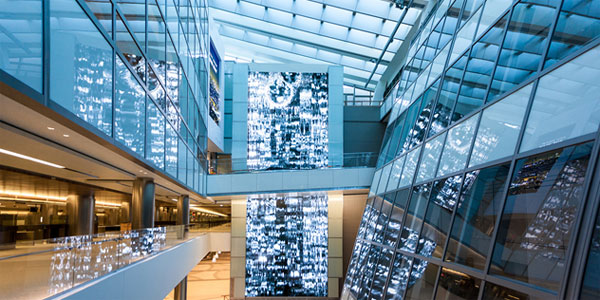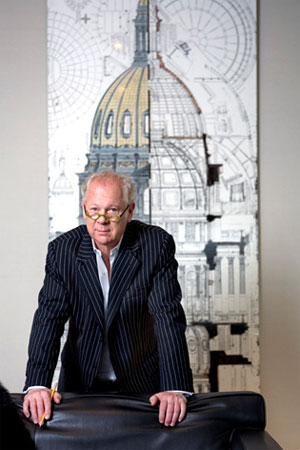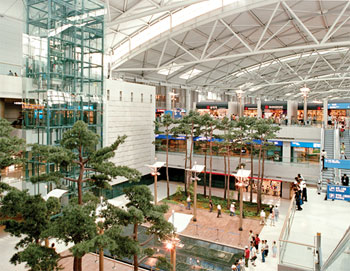
While we all know that new technology will have a huge impact on the future airport experience, it’s far more difficult to predict exactly how these technological developments will impact the actual appearance of future terminals. Given the intrinsic link between new technologies and architectural design, one man who is perhaps best placed to provide insight on this is Curtis Fentress, Principal-in-Charge of Design at Fentress Architects, the company behind landmark airport developments such as Denver International Airport, Incheon Airport and, most recently, the FTE Award-winning Bradley West Terminal at Los Angeles International Airport (LAX).
“Technology is moving so quickly it’s hard for all of us to grasp the effects,” Fentress told FTE. “We’ve just finished the new terminal at LAX and we’ve been working on that project for around five years and we’ve made changes on the fly throughout that time.”

The key features of this futuristic terminal are the vast digital screens that passengers can interact with via their own mobile device and an 80-metre-high digital clock tower. Fentress explained that these features point towards a new model for the airport of the future.
He said: “Technology affects the shape and look of airports and what we’re going to see is the retrofitting of screens and interactive devices in almost all airports. The potential is there for all sorts of interaction with the passenger of the future.”
A self-cleaning, self-repairing airport
The changing nature of the actual materials used to construct future facilities is another of the focal points that could potentially have a significant impact on the appearance of tomorrow’s airport. Materials that repair themselves when damaged and surfaces that clean themselves are among the more seemingly outlandish innovations that could, in fact, become a reality in the not-too-distant future.
“Things like self-repairing materials, self-cleaning glass and self-cleaning carpets are wonderful concepts and it’s true that all of them are being developed,” Fentress continued. “The ability of people to create these things is absolutely amazing and I do think that all of them are part of the future. However, when we’re going to have a big breakthrough is hard to predict.”
Creating a sense of place

The desire to create a sense of place is another vital influencer with regards to the design of the future airport. While Fentress pioneered this approach with the Rocky Mountains-inspired Denver International Airport back in 1995, it’s a theme that he expects to see reflected in every major airport project going forward.
He said: “What we did in Denver 20 years ago was unique. Since then, we’ve seen a trend of airports and communities wanting something unique and special, and architects have fallen in line with that trend. This is something that will continue because what’s appropriate for Denver isn’t appropriate for New York, and what’s appropriate for Shanghai isn’t appropriate for Sydney. The airport now has to connect to the style of the place. In LA, the inspiration was the waves coming in on the beach from the Pacific Ocean and at Incheon it was the Korean home. That’s exactly what architecture is about – creating a sense of place.”

Passengers become customers
As an architect, Fentress’ main focus may well be on the appearance of the airport, but as a frequent flyer, he also foresees positive developments in the passenger experience. For example, making use of personal devices to automatically communicate with the airport is one innovation he expects to become mainstream. The main driving factor from within the industry to enhance the level of service on offer, though, is the recent change in mindset.
“Airlines now talk about ‘customers’ and that in itself is a different attitude to what we’ve seen in the past,” he explained. “There is also competition between cities, competition between airports and competition between airlines, who all want passengers’ time. All of the airports are now trying to prove themselves to the passenger.”
Undoubtedly, this increased competition and renewed focus on passenger experience bodes very well for the passenger of the future, and if this experience can take place in an airport that offers a true sense of place and embraces the technologies that travellers find most useful, tomorrow’s traveller may well see the airport as an enjoyable part of their journey, rather than an obstacle between them and their final destination.






